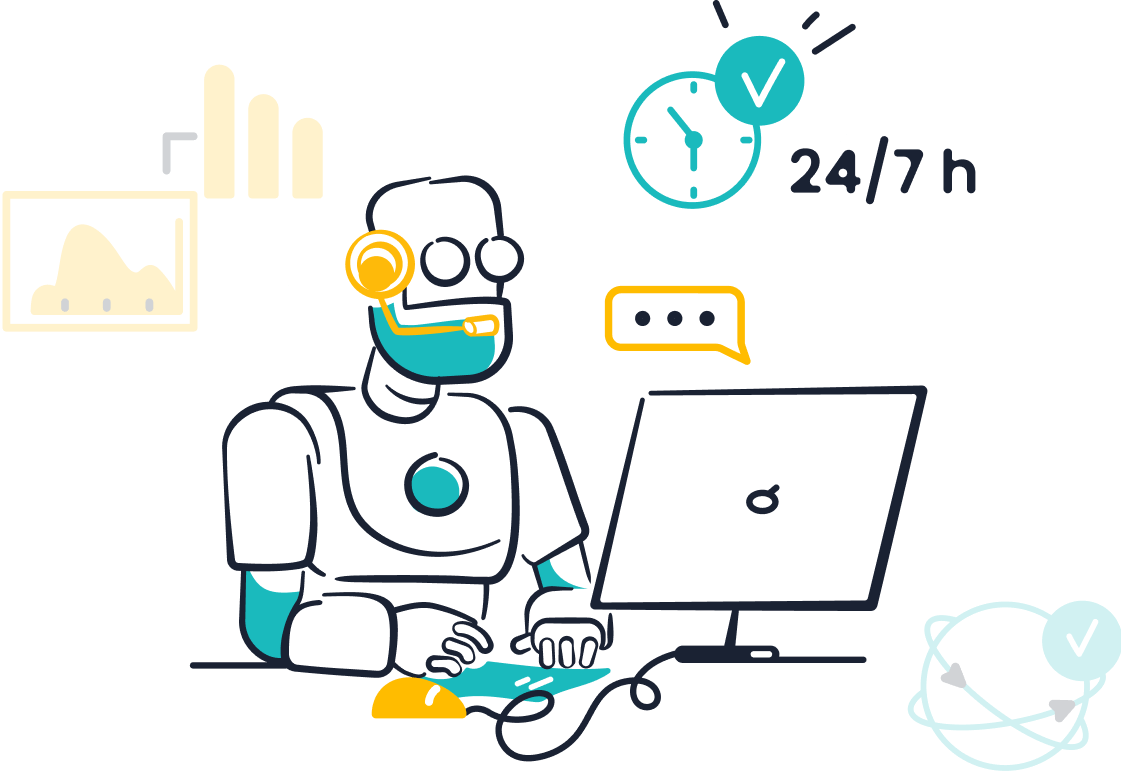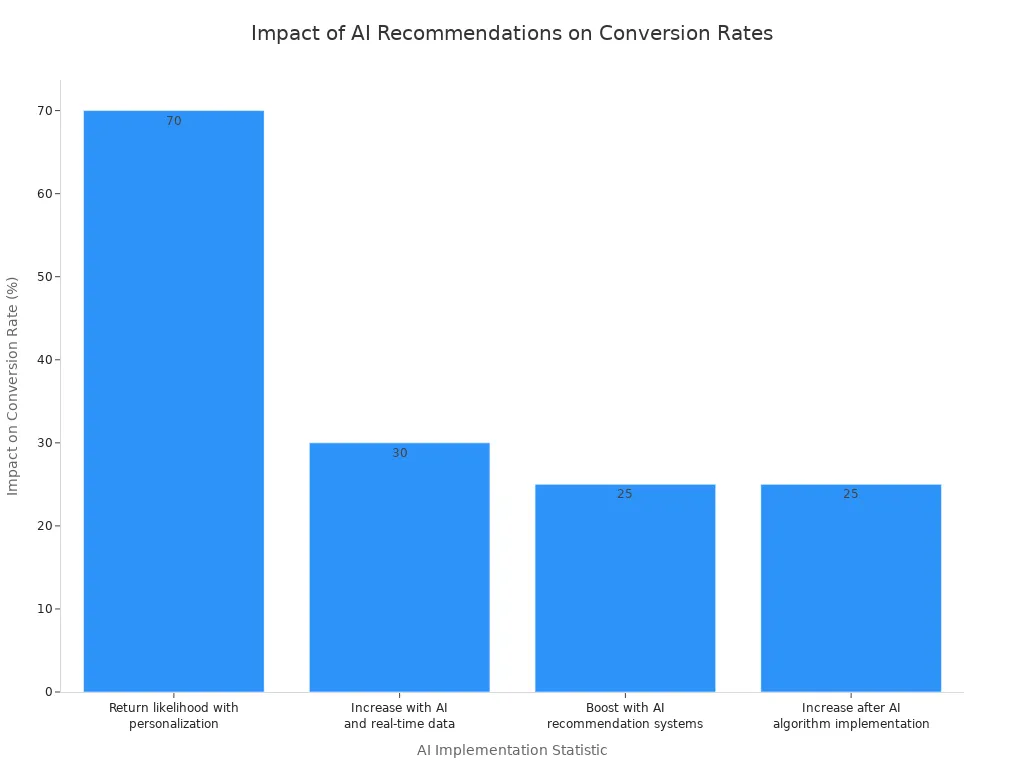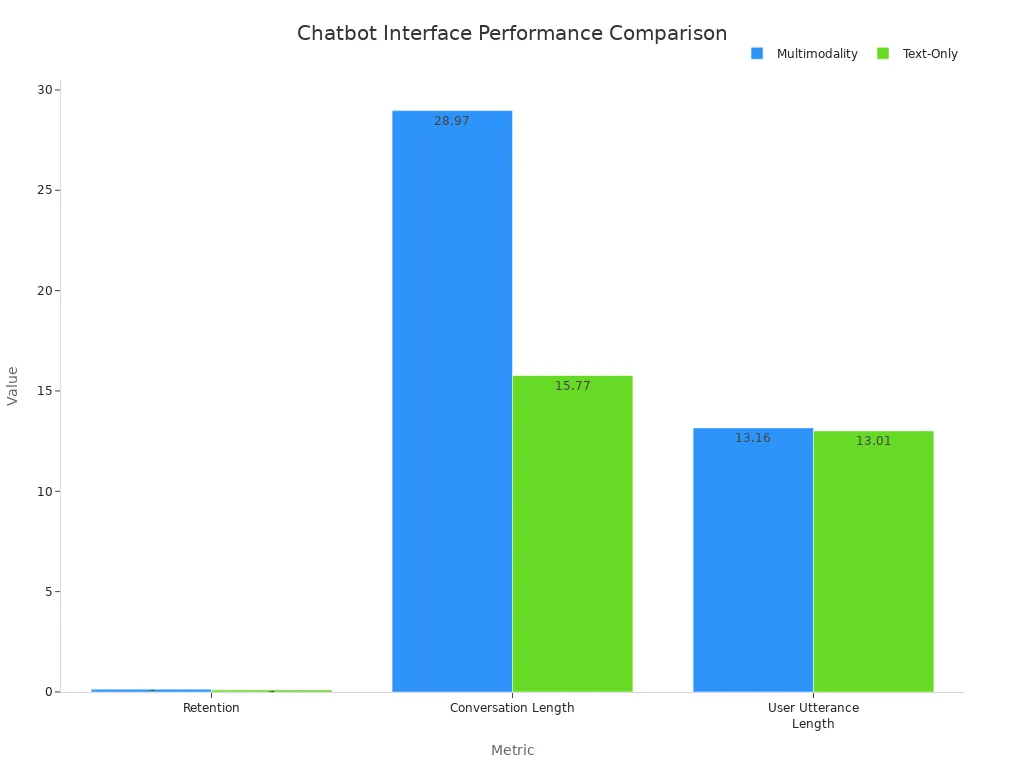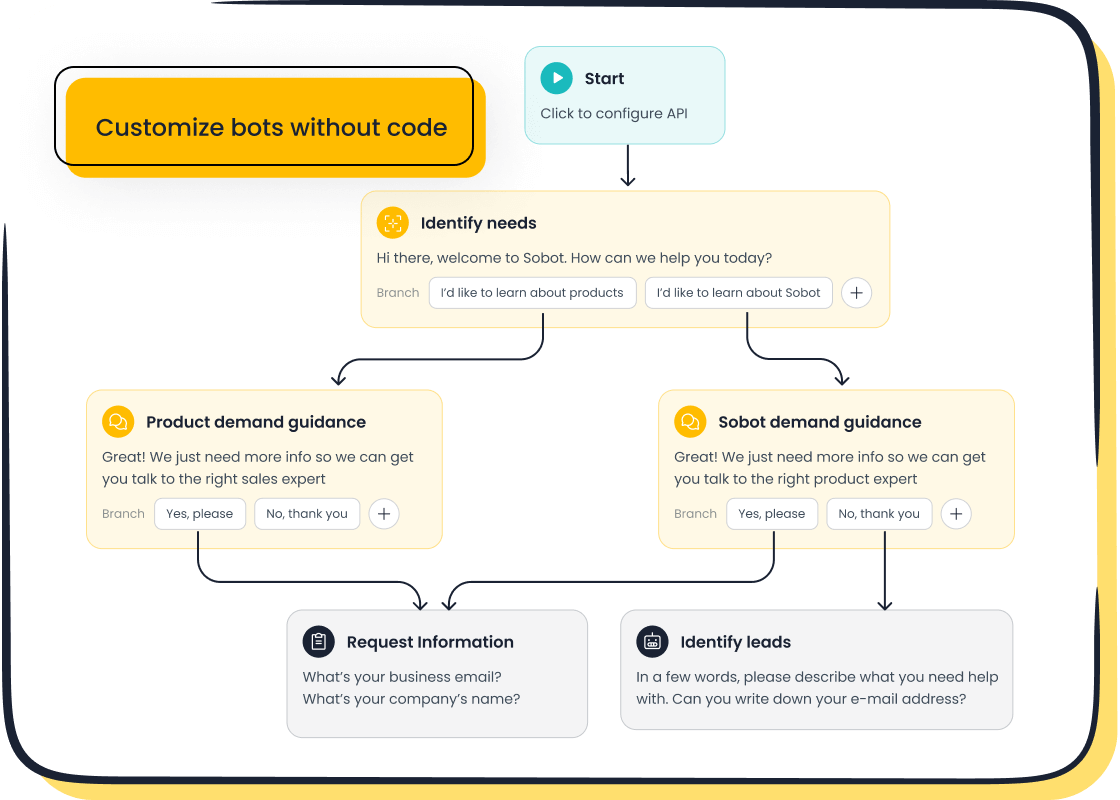5 Chatbot Response Trends to Watch in 2025

Five emerging chatbot trends are reshaping customer interactions for 2025. These trends include Hyper-Personalization, Emotional Intelligence, Multimodal Interactions, Autonomous Actions, and Ethical AI. This evolution transforms chatbots from simple tools into strategic AI assets. The chatbot market will reach $9.56 billion by 2025, showing the rapid adoption of this chatbot technology. Platforms like the Sobot AI chatbot and Sobot call center embody these emerging chatbot trends. The adoption of conversational AI is crucial for an enhanced customer experience. These emerging chatbot trends require a new approach to chatbot responses and conversational AI. The adoption of advanced chatbots is no longer optional.
Trend 1: Hyper-Personalized Chatbot Responses
The era of one-size-fits-all chatbot responses is over. In 2025, one of the most important trends is hyper-personalization. This approach transforms the chatbot from a simple Q&A tool into a smart, personal assistant. Advanced AI chatbots now deliver unique experiences for every user.
Defining Hyper-Personalization
Hyper-personalization means using data and AI to tailor interactions to an individual's specific needs and history. Instead of following rigid scripts, modern chatbots analyze past purchases, browsing behavior, and previous support tickets. This allows the chatbot to provide relevant, helpful, and unique answers. This level of personalization makes the chatbot experience feel more human and effective.
The Role of Context-Awareness
Context is the engine behind effective personalization. Advanced chatbots use real-time analytics to understand the full picture of a customer's journey. By processing data with real-time analytics, a chatbot knows who the user is and what they need at that moment. This deep awareness, powered by real-time analytics, enables truly personalized interactions. Sobot's AI chatbot leverages real-time analytics to create these context-aware conversations, making every interaction seamless. The use of real-time analytics is fundamental for modern chatbots. Real-time analytics helps the AI understand user intent instantly. This capability is built on powerful real-time analytics. The system uses real-time analytics to track user behavior. Real-time analytics provides immediate insights. This process relies on real-time analytics.
Driving Customer Loyalty
Personalized interactions build strong customer relationships. When customers feel understood, they are more likely to remain loyal.
A leading smart device innovator, OPPO, saw a 57% increase in its repurchase rate after implementing Sobot’s chatbot and ticketing system. This success highlights how personalized and efficient AI service directly boosts customer loyalty.
The impact of AI-driven personalization is clear across industries. Data shows significant gains in customer retention and satisfaction when businesses adopt these AI trends.
| Impact Area | Statistic |
|---|---|
| Sales Growth (AI-driven personalization) | Up to 20% |
| Repurchase Rate (OPPO with Sobot) | 57% increase |
| Consumers likely to repurchase (Personalized experience) | 78% |
| Customer Satisfaction Score (AI chatbots like Sobot) | 97% |
Boosting Conversion Rates
In e-commerce, personalization directly impacts sales. AI chatbots can act as virtual shopping assistants, offering smart product recommendations to reduce cart abandonment. Sobot's AI Solution for Retail uses this strategy to turn browsers into buyers. By analyzing user data, the AI chatbot suggests products a customer is likely to love, increasing the chances of a purchase.

This targeted approach helps companies using AI achieve significant boosts in conversion rates. These chatbots are essential tools for modern retail.
Trend 2: Emotional Intelligence in Customer Service

The next major evolution in chatbot technology is emotional intelligence. Future-forward customer service moves beyond just answering questions. It involves understanding and responding to human emotions. This shift is one of the most important trends for 2025, turning a standard chatbot into an empathetic partner.
What is Affective AI?
Affective AI, or emotional AI, gives technology the ability to recognize, interpret, and simulate human emotions. In customer service, this is primarily achieved through sentiment analysis. This technology allows a chatbot to analyze the text a user types. The AI identifies feelings like frustration, happiness, or confusion. While specific adoption rates are still emerging, 64% of customer experience leaders plan to increase investments in evolving their chatbots, showing a clear move toward advanced capabilities like emotional AI.
The Rise of Empathetic Chatbots
Empathetic chatbots are becoming more common across various industries. These AI tools use sentiment analysis to create a more supportive and human-like customer experience. This trend is already delivering powerful results.
- A national non-profit uses an AI agent to provide caregivers with multilingual support and access to medical records. The chatbot uses advanced sentiment analysis to adjust its tone, offering empathy when it detects stress.
- In Malaysia, Sunway Medical Centre uses AI-powered chatbots to improve care delivery. These chatbots help with patient data collection and preliminary diagnoses, freeing up healthcare providers.
These examples show how empathetic conversational AI is transforming customer support.
Adapting to User Emotions
An emotionally intelligent chatbot does more than just detect feelings; it adapts its chatbot responses accordingly. If the AI detects frustration, it can adopt a more patient tone or escalate the issue to a human agent. This adaptability is key to successful resolutions. Sobot's AI chatbot uses natural language processing (NLP) to understand user intent and emotion, which helps improve the overall customer experience and aligns with the goal of boosting Net Promoter Scores (NPS).
This adaptive capability makes the conversational AI feel less like a machine and more like a helpful assistant.
Improving Brand Perception
When chatbots show empathy, it positively impacts how customers see a brand. Socially oriented communication from a chatbot creates a perception of warmth. This warmth builds trust and encourages customers to return. Customers who feel an emotional connection are more likely to have a positive view of the company. This human touch in customer service helps brands build stronger, more loyal relationships. The use of NLP in these advanced chatbots is crucial for creating these positive interactions.
Trend 3: Multimodal and Voice-Enabled Interactions

The future of conversational AI is not just about what chatbots say, but how they say it. One of the key trends for 2025 is the shift to multimodal interactions. These advanced AI chatbots communicate using more than just text. They integrate voice, images, and video to create a richer, more effective customer experience.
Moving Beyond Text-Only
Simple text-based chatbots are becoming a thing of the past. Users now expect more dynamic and engaging conversations. Multimodal chatbots meet this demand by allowing users to interact in the way that is most convenient for them. This evolution makes the AI chatbot a more powerful and flexible tool for businesses. This conversational approach is a significant step forward for AI technology.
Integrating Voice, Images, and Video
Leading brands now use voice and visual features to guide customers. For example, Kia Motors' "Kian" chatbot on Facebook Messenger acts as a digital guide. It provides images, videos, and detailed information to help users explore vehicles. This use of voice and video chatbots simplifies complex sales processes. These chatbots use AI to deliver an unmatched conversational experience. Sobot's AI chatbot platform supports these capabilities, enabling businesses to build their own voice and video chatbots.
Enhancing Accessibility
Multimodal design makes technology more accessible to everyone. Voice and visual features help users with visual impairments or those who prefer not to type. A chatbot with multilingual capabilities ensures that language is not a barrier. For instance, Sobot’s chatbots offer multilingual capabilities, allowing global brands to connect with customers in their native language. These multilingual capabilities make AI chatbots truly inclusive.
Streamlining User Experience
Integrating multiple communication modes significantly improves user engagement. Multimodal chatbots hold user attention longer and create more meaningful interactions compared to text-only chatbots.
| Metric | Multimodality | Text-Only |
|---|---|---|
| Retention | 0.139 | 0.105 |
| Conversation Length | 28.97 | 15.77 |
| User Utterance Length | 13.16 | 13.01 |
As the data shows, users interact more deeply when they have multiple ways to communicate.

This approach optimizes the user journey, making interactions with voice and video chatbots smoother and more satisfying. The inclusion of multilingual capabilities further enhances this effect.
Trend 4: Autonomous Action and Workflow Automation
The evolution of chatbots continues with one of the most impactful trends: autonomous action. Modern conversational AI platforms do more than just talk. They act. This shift transforms the chatbot from a passive information source into an active participant in business operations. This automation is a cornerstone of modern chatbot development.
From Answering to Acting
Early chatbots provided answers from a knowledge base. Today’s advanced AI chatbots complete tasks for users. They can book appointments, process payments, track orders, or manage internal IT requests. This capability moves the chatbot from a simple customer support tool to an integral part of a company's workflow. This advanced chatbot development allows for deeper integration into business operations.
The Action-Oriented Chatbot
An action-oriented chatbot is designed to execute specific functions. This type of AI is already creating value across different sectors. Successful chatbot development focuses on these practical applications. Examples include:
- DenserBot: This chatbot automates B2B lead generation by engaging website visitors and sending qualified lead data directly to a CRM.
- Oracle’s Supply Chain Chatbot: It helps manage logistics by providing instant updates on shipments and inventory levels.
- Shopify ShopBot: This chatbot guides users through product discovery, handles returns, and tracks orders, simplifying the e-commerce journey.
These chatbots show how targeted chatbot development can solve real-world problems.
Automating Business Workflows
The power of this trend lies in workflow automation. Businesses can design chatbots to handle multi-step processes without human intervention. For instance, the Sobot Chatbot makes this accessible to everyone. It features a no-code, point-and-click interface. This tool empowers teams to design and deploy complex automation flows easily. This approach to chatbot development means you don't need to be a programmer to build a powerful AI assistant. This ease of chatbot development is a game-changer.

Increasing Operational Efficiency
Autonomous chatbots drive significant gains in efficiency. They handle repetitive tasks 24/7, freeing human agents to focus on more complex issues. This leads to faster resolutions and lower operational costs.
The Sobot Chatbot improves productivity by 70% and cuts expenses by 50% through its 24/7 autonomous query resolution. This is a clear example of effective chatbot development.
| Metric | Typical Improvement |
|---|---|
| Customer service expense reduction | 60-80% |
| Resolution times for routine inquiries | Decrease by 50% or more |
| ROI (public sector agencies) | Up to 533% within 9 months |
This level of automation is essential for scaling business operations effectively.
Trend 5: Ethical AI as a Core of Emerging Chatbot Trends
As chatbots become more powerful, ethics moves to the forefront of emerging chatbot trends. Trust is the foundation of any customer relationship. Businesses must prioritize ethical AI to build and maintain that trust. This focus on responsible AI is one of the most critical trends for 2025. It ensures that the technology serves users fairly and securely.
The Demand for AI Transparency
Users want to know when they are interacting with an AI. Transparency is no longer optional. Companies must be clear about their chatbot's capabilities and how it uses data. This honesty helps manage user expectations. It also builds a stronger connection between the customer and the brand. An ethical chatbot clearly discloses its nature, making the interaction feel more trustworthy. These emerging chatbot trends demand a new level of openness.
Best Practices in Ethical Design
Ethical design is a key part of modern AI development. It involves creating a framework that guides the creation of every chatbot. Best practices ensure the AI is helpful, not harmful.
- User-Centric Design: The design process should focus on user needs. It must prioritize accessibility for a diverse user base.
- Transparency and Control: Users need clear information about how their data is used. They should have options to control their data, like opting out of collection.
- Continuous Learning: Ethical AI systems must adapt and improve. This involves updating the chatbot with new data and user feedback.
Ensuring Data Privacy
Data privacy is a major concern for customers. Protecting user information is essential for any business using AI. Modern chatbots must handle data securely. Sobot’s AI Solution demonstrates a strong commitment to this principle. The platform ensures data privacy with features like GDPR compliance and data encryption. This secure approach protects sensitive information across all interactions, from a simple chatbot query to a complex support ticket. Secure chatbots are vital for maintaining customer confidence.
Note: Building a trustworthy AI involves more than just technology. It requires a company-wide commitment to ethical principles, ensuring every chatbot and AI tool respects user privacy and delivers fair chatbot responses.
Building Long-Term Trust
Ultimately, ethical AI is about building lasting relationships. When customers trust a company's chatbots, they are more likely to remain loyal. These emerging chatbot trends show that ethics and business success go hand in hand. A brand that prioritizes ethical AI demonstrates its commitment to its customers. This focus on trust is what separates leading companies from the rest. It is a core component of successful AI strategy.
The future of customer interactions is clear. The five emerging chatbot trends—personalization, empathy, multimodality, autonomy, and ethics—are reshaping the landscape. These trends show that the adoption of advanced AI chatbots is essential. The future lies in intelligent, integrated automation, a principle demonstrated by comprehensive platforms like Sobot. The adoption of this conversational AI is critical.
“Building an intelligent automation strategy requires integrating key capabilities like automation, orchestration, AI and APIs. Each plays a distinct role, and together, they create a powerful foundation that enables organizations to unlock efficiency, adaptability and innovation across their operations.” Bhavik Patel Head of competitive intelligence, SS&C Blue Prism
Businesses must evaluate their strategies to meet 2025's expectations. The adoption of these emerging chatbot trends is no longer optional. Explore solutions like the Sobot Chatbot to begin. This chatbot delivers a powerful response to modern demands. These chatbots and this AI chatbot technology are the future. Embark on your contact journey with a better chatbot.
FAQ
Why is the adoption of emerging chatbot trends important for customer service?
The adoption of emerging chatbot trends is crucial. These trends help businesses meet modern customer expectations. An advanced chatbot provides instant, personalized customer service. This improves satisfaction and loyalty. The adoption of a better chatbot is a smart business move.
How do these emerging chatbot trends improve customer support?
These emerging chatbot trends enhance customer support significantly. Emotionally intelligent chatbots offer empathy. Multimodal chatbots provide richer interactions. The adoption of autonomous AI allows a chatbot to solve problems directly. This creates a more efficient customer service experience.
What is the first step for a business to implement these emerging chatbot trends?
The first step is evaluating current customer service needs. Businesses should identify key areas for improvement. The adoption of a platform like the Sobot Chatbot makes the transition easy. Its no-code interface simplifies the adoption of advanced AI and conversational ai.
Can small businesses benefit from the adoption of these emerging chatbot trends?
Yes, small businesses can greatly benefit. The adoption of these emerging chatbot trends helps them compete with larger companies. Modern chatbots automate customer service, saving time and money. This adoption of AI technology allows them to offer excellent support 24/7.
How does AI change how chatbots work?
AI transforms chatbots from simple script followers to intelligent assistants. AI enables a chatbot to understand context, personalize responses, and perform tasks. This AI makes conversational ai more human-like and effective. The adoption of these chatbots is driven by these powerful AI capabilities.
See Also
Leading Websites Leveraging Chatbot Technology: A 2024 Overview
Discover the Top 10 Website Chatbots for 2024 Success
Effortlessly Implement Website Chatbot Examples: A Simple Guide
Unlocking Website Potential: Ten Key Chatbot Integration Advantages
Your Essential Guide to Selecting Optimal Chatbot Software Solutions
